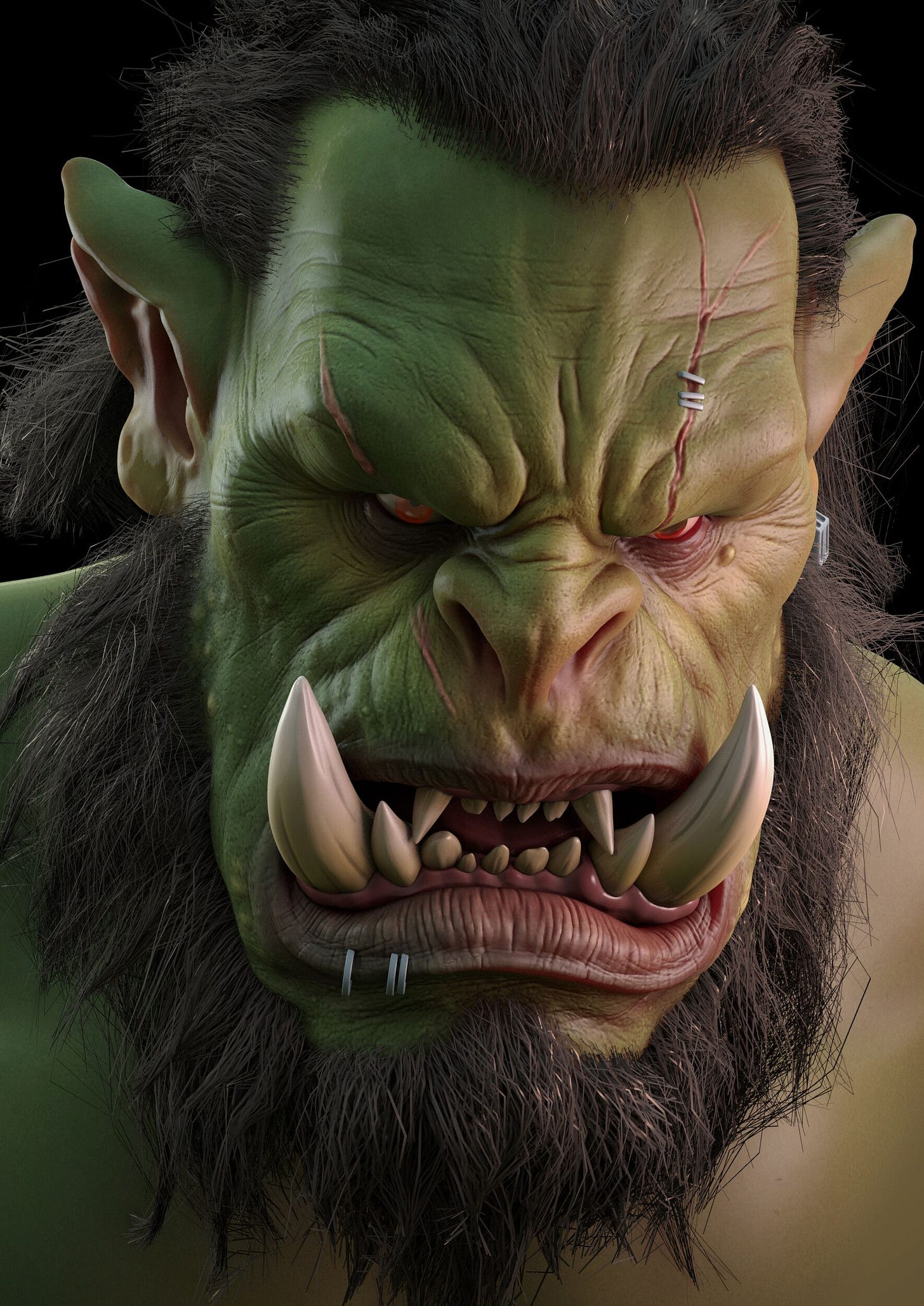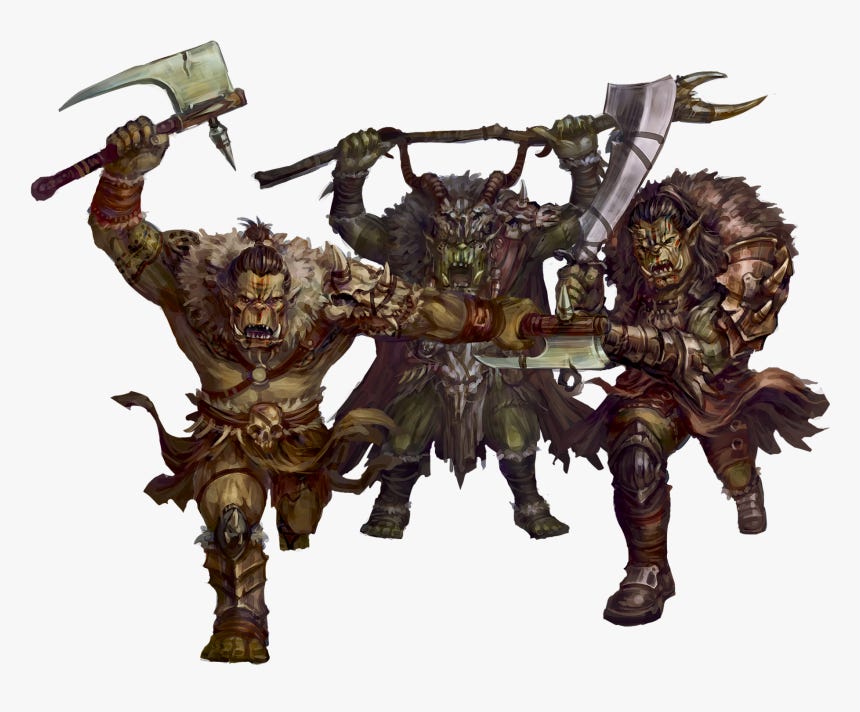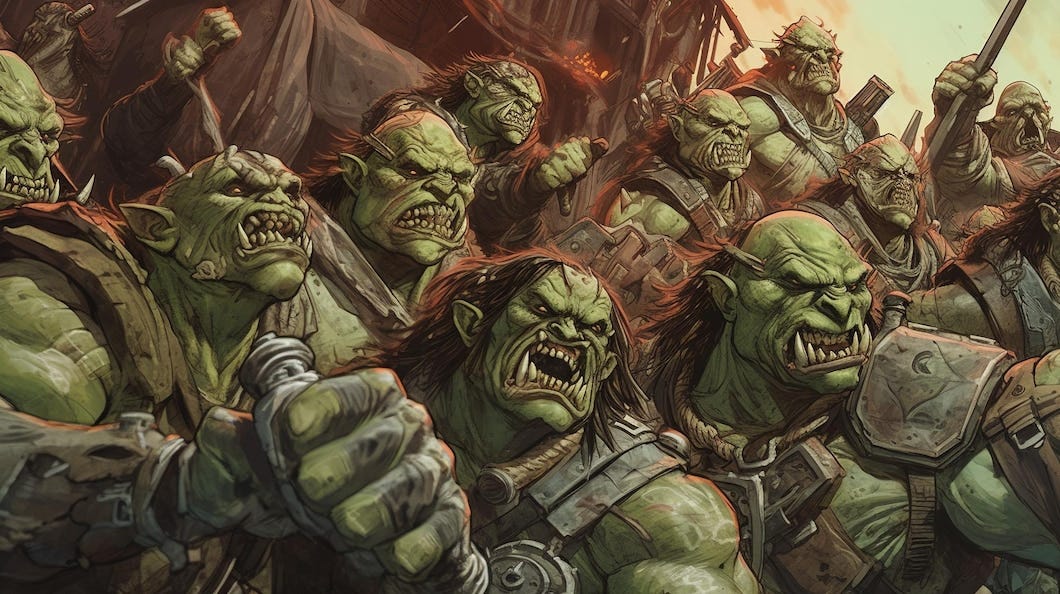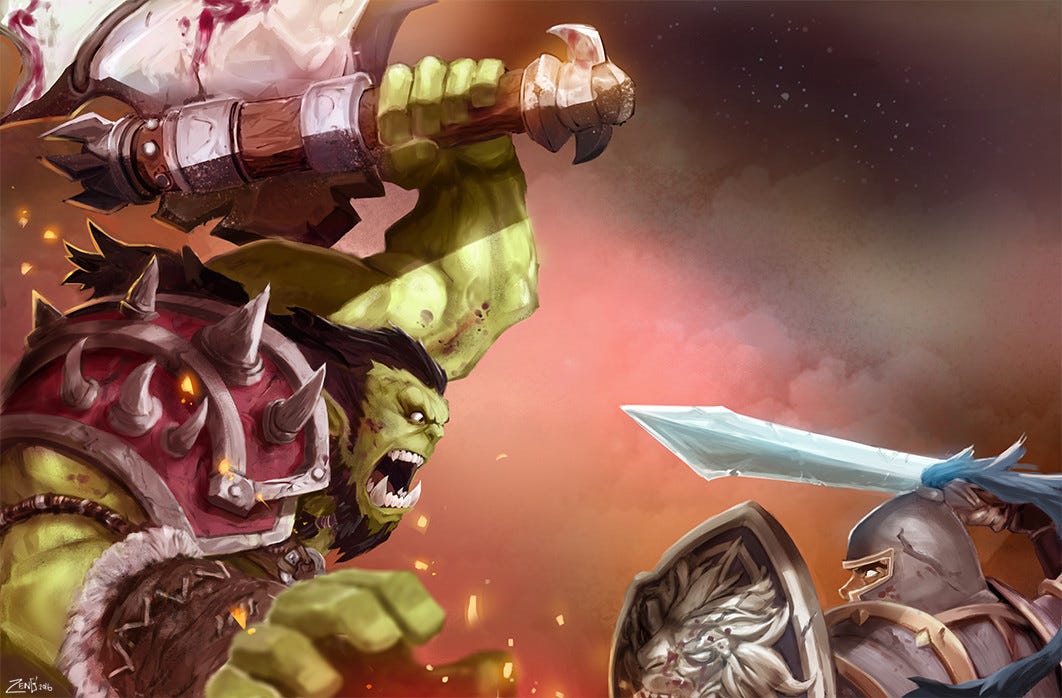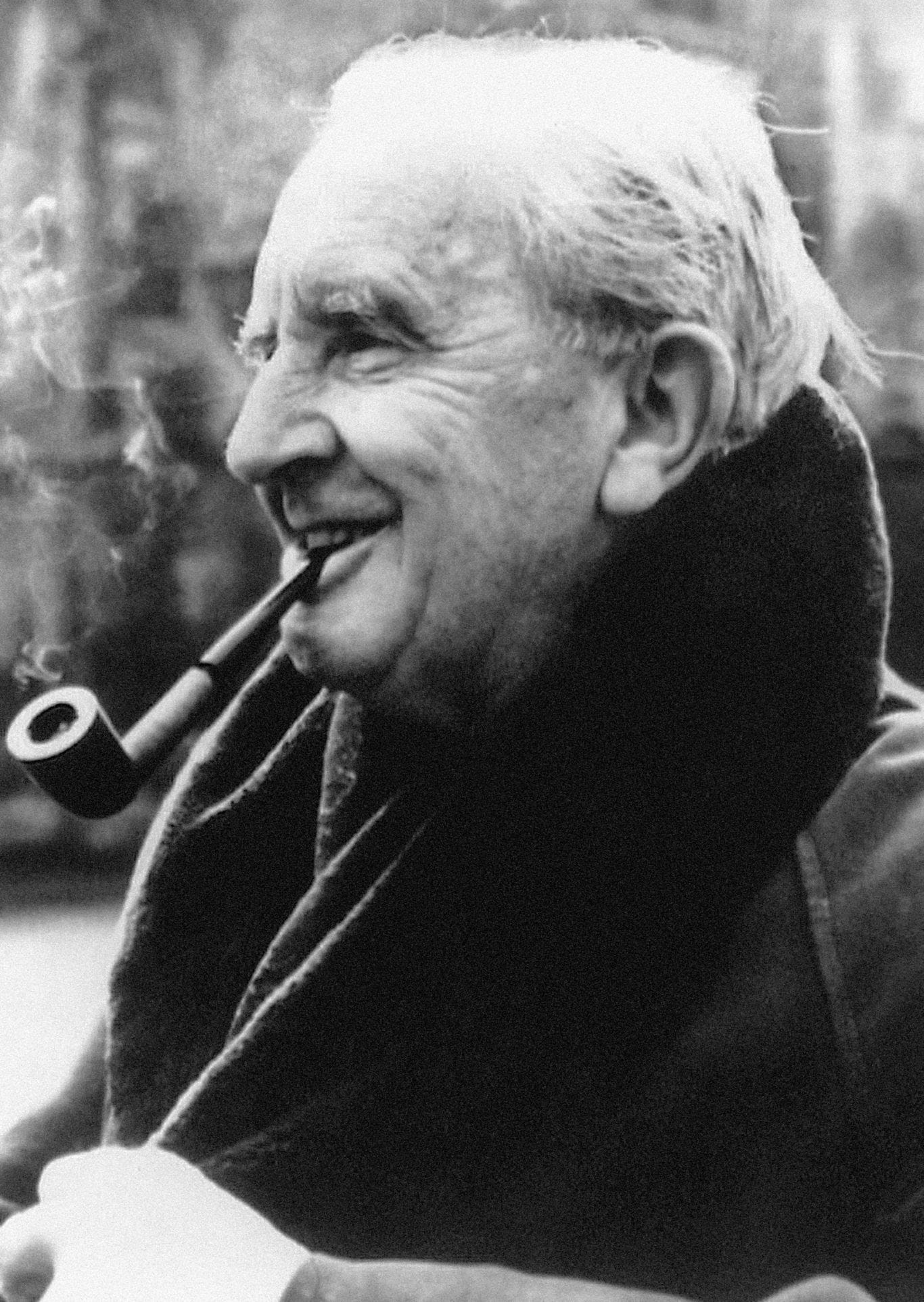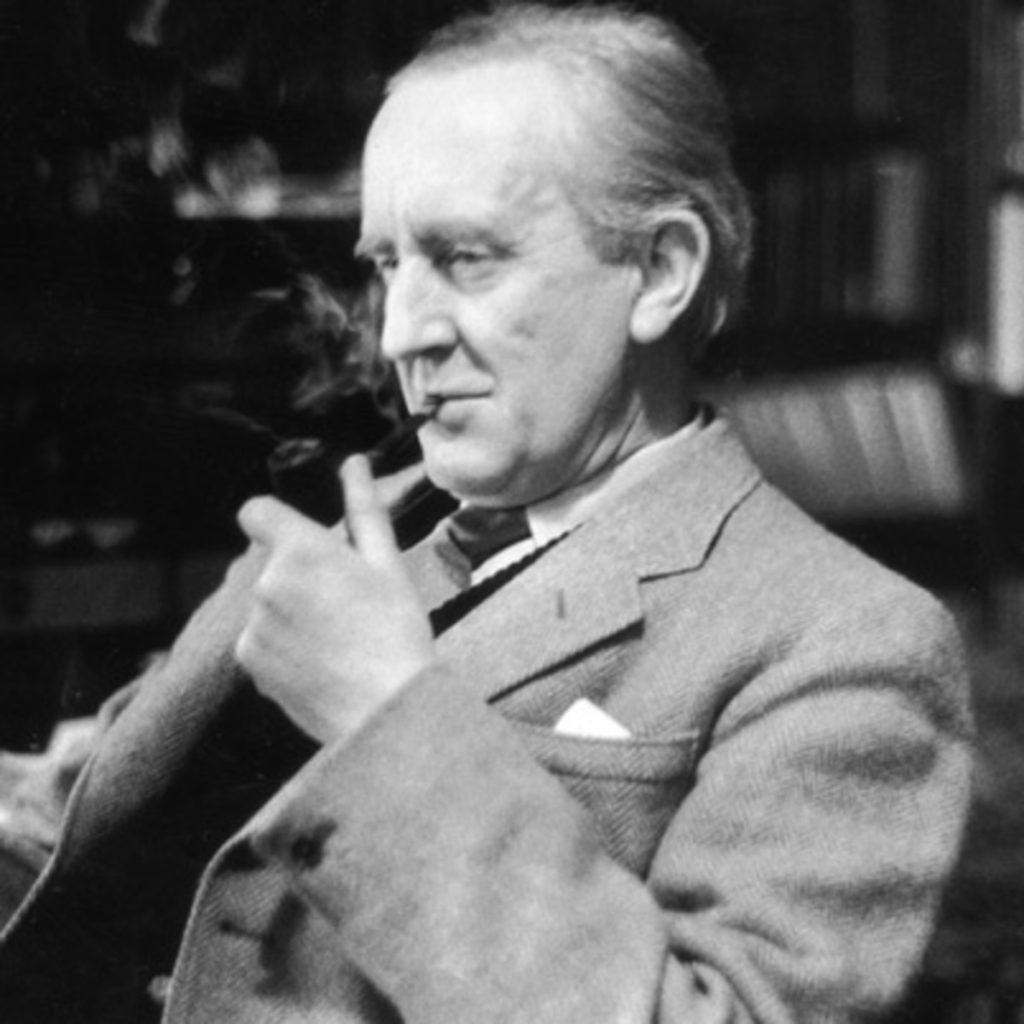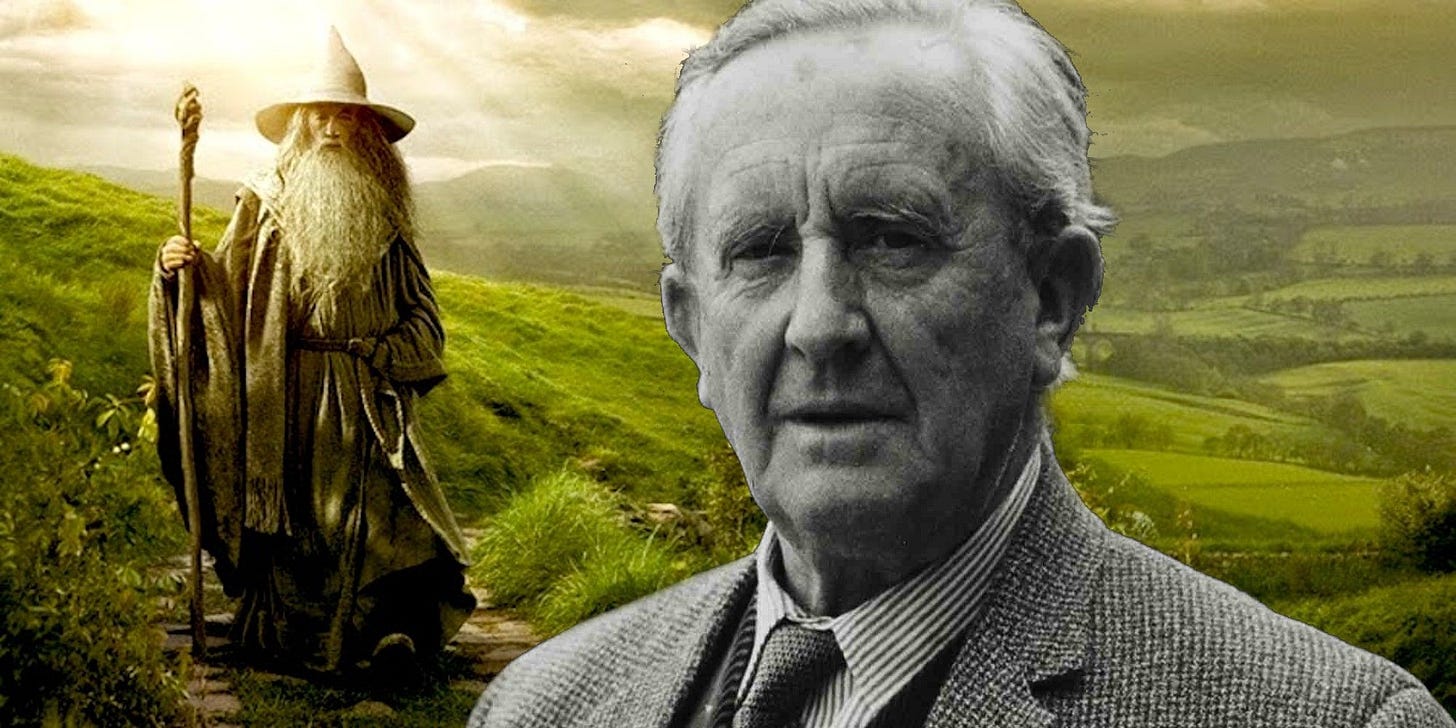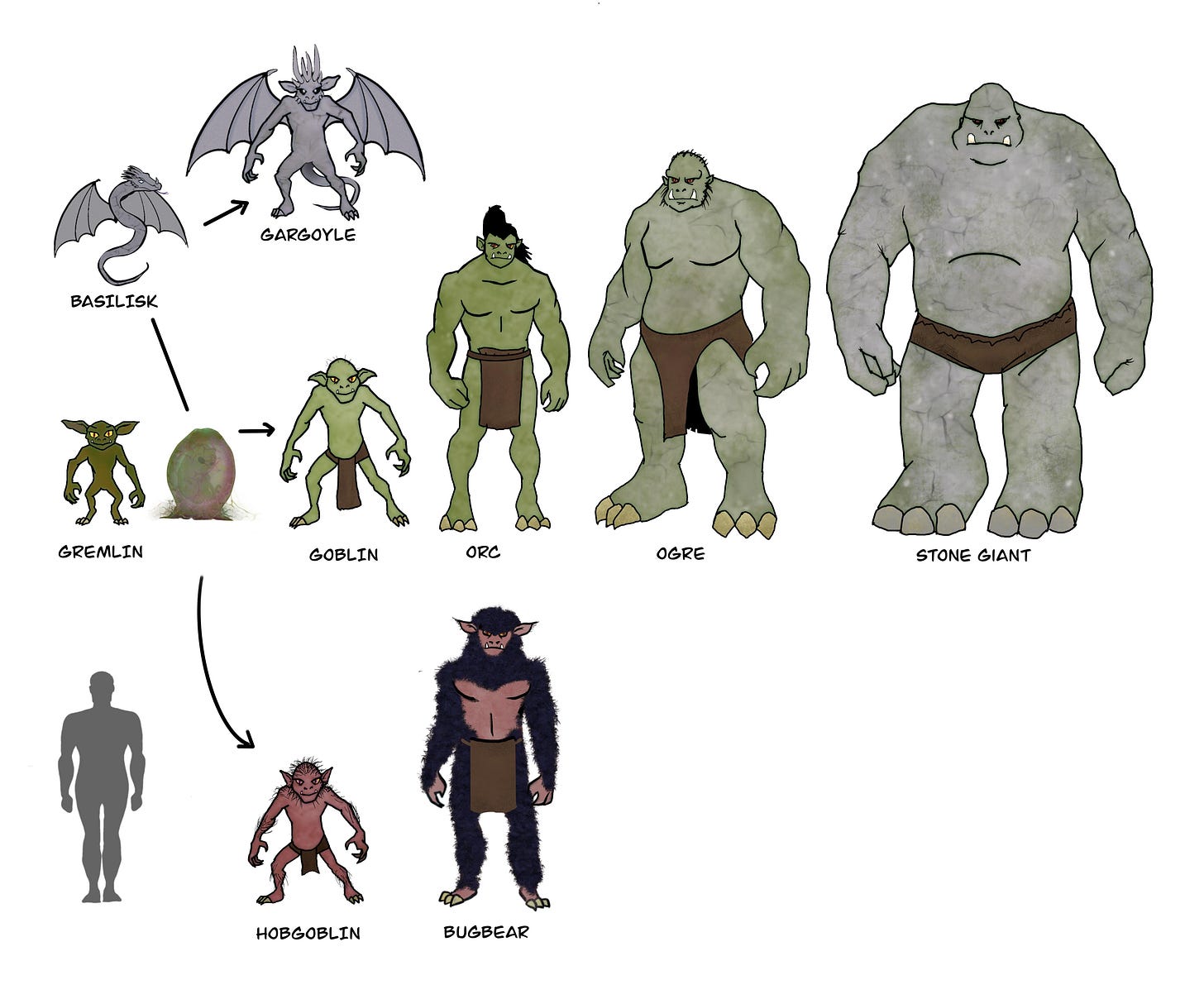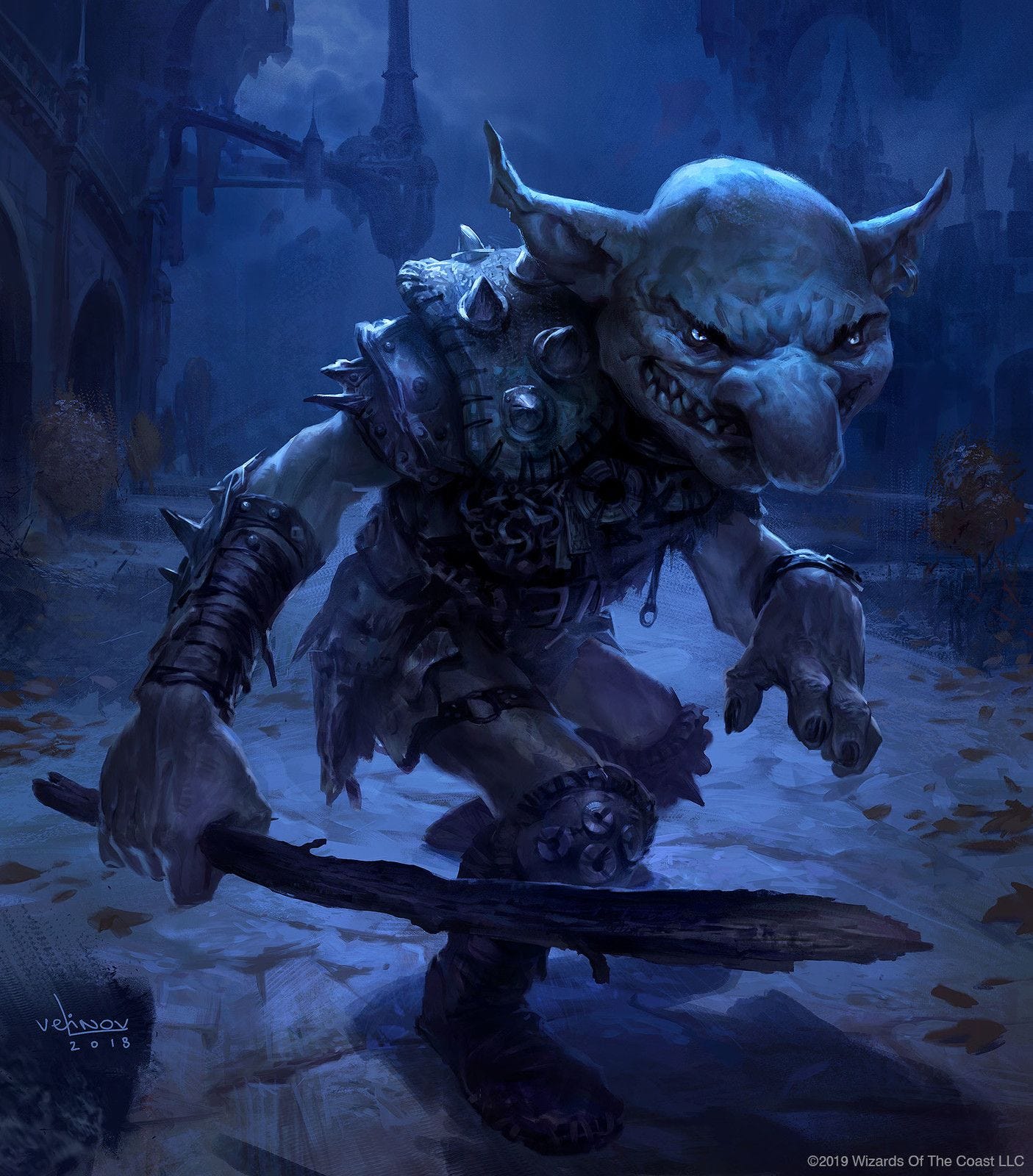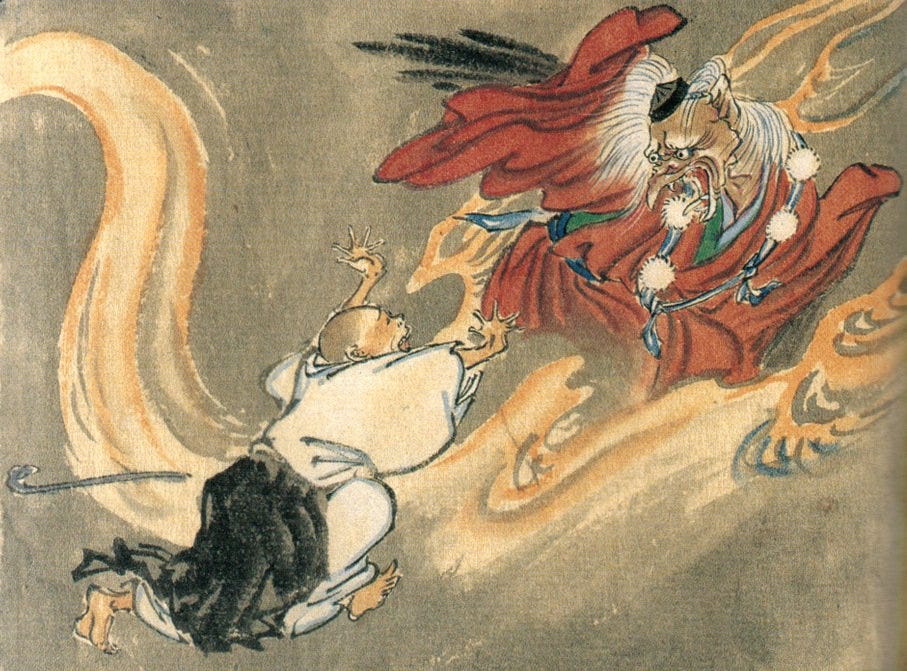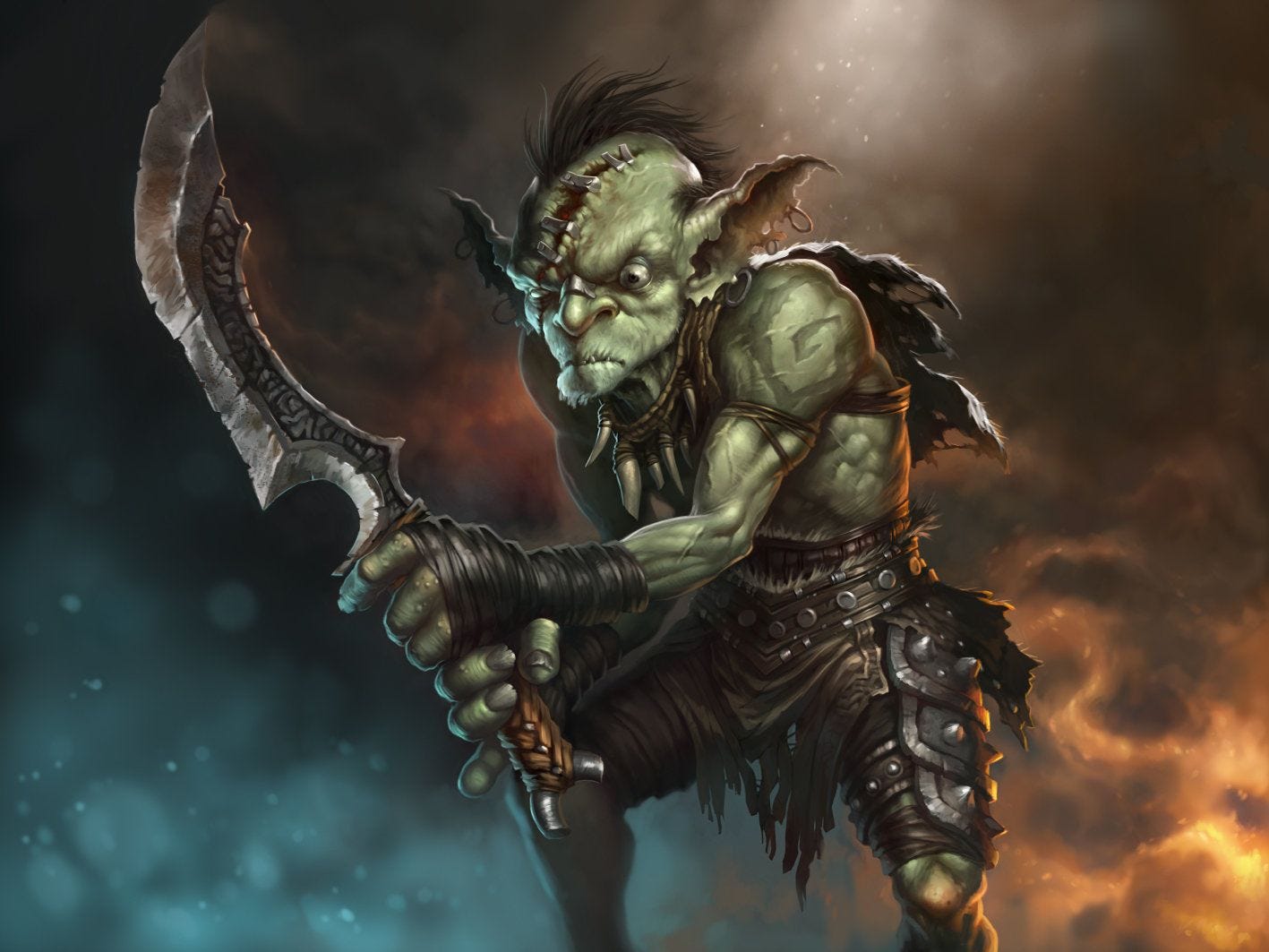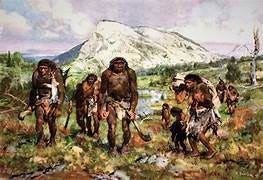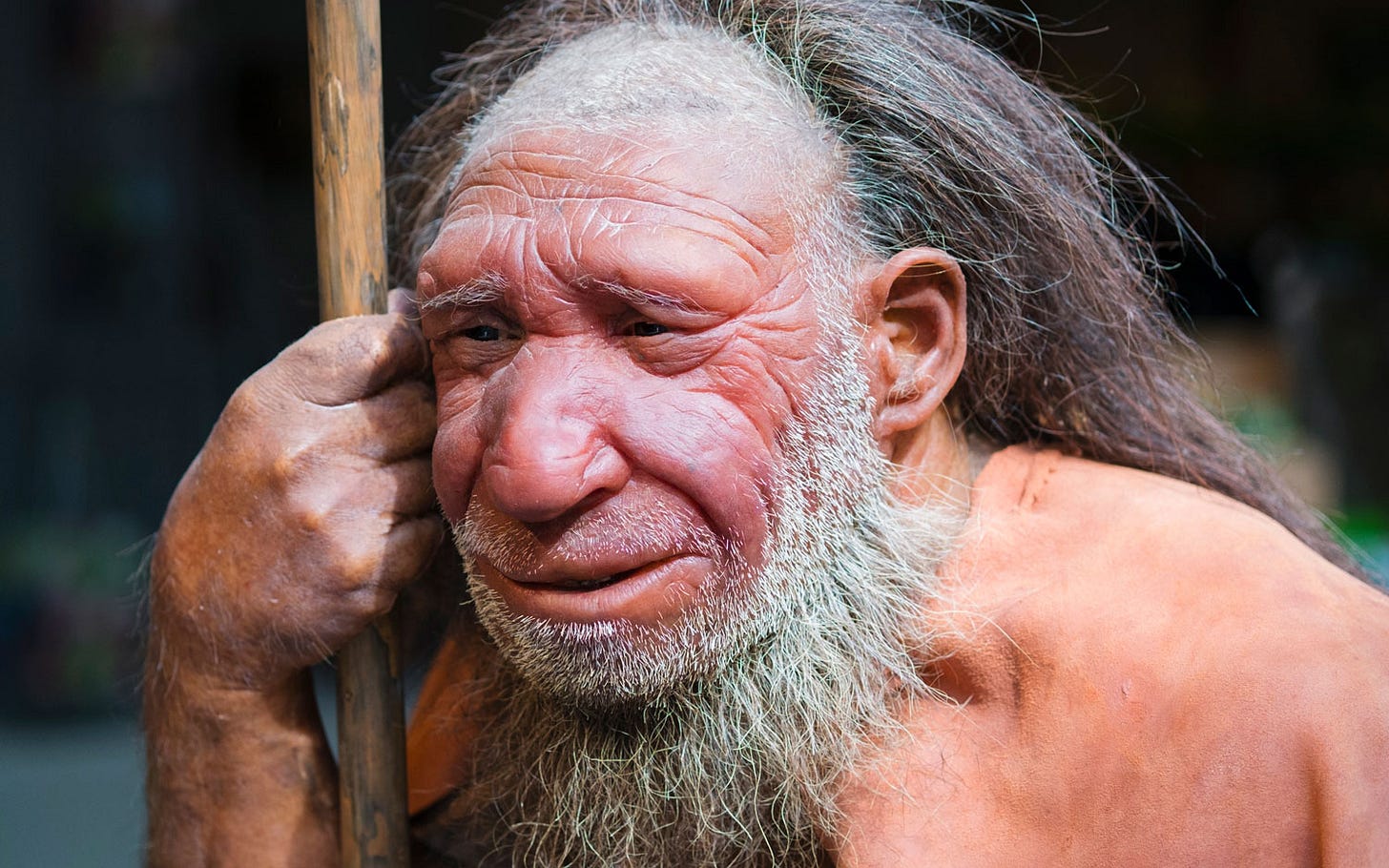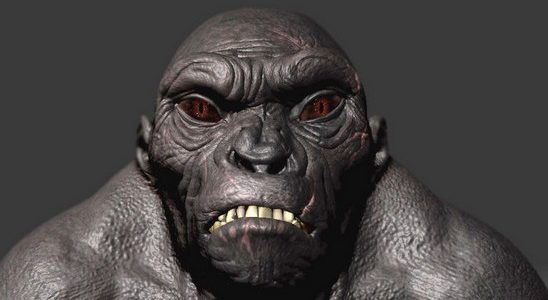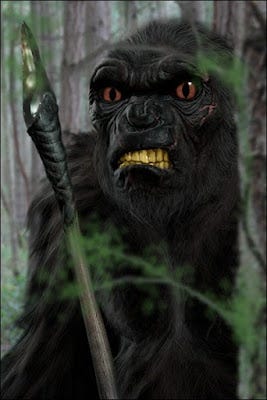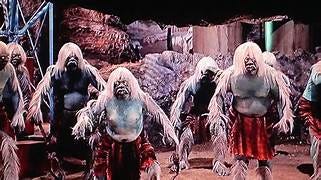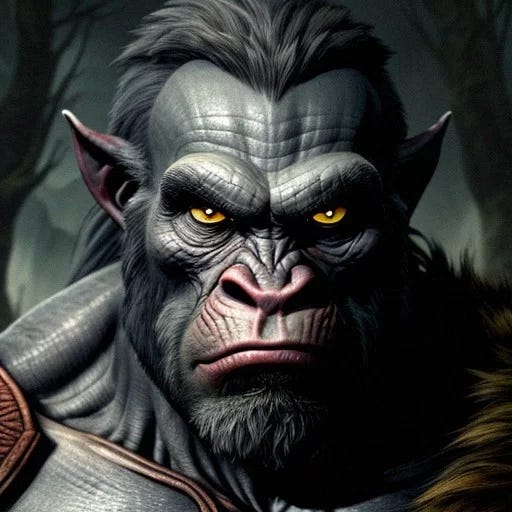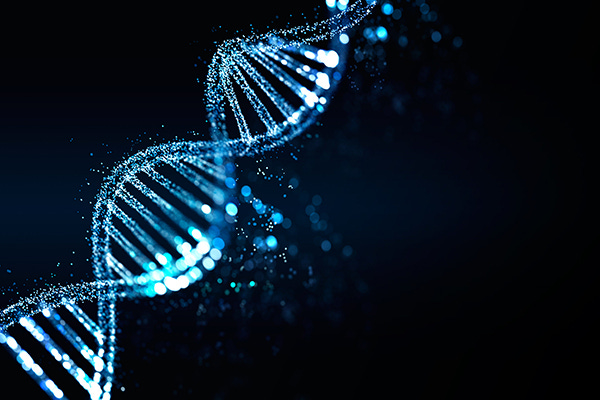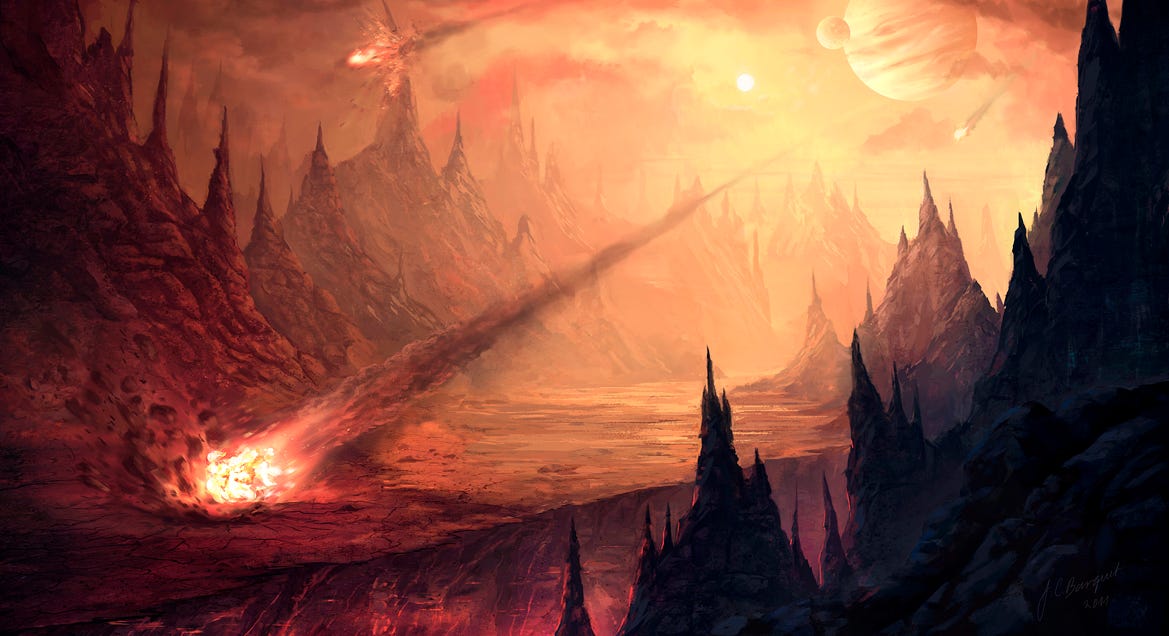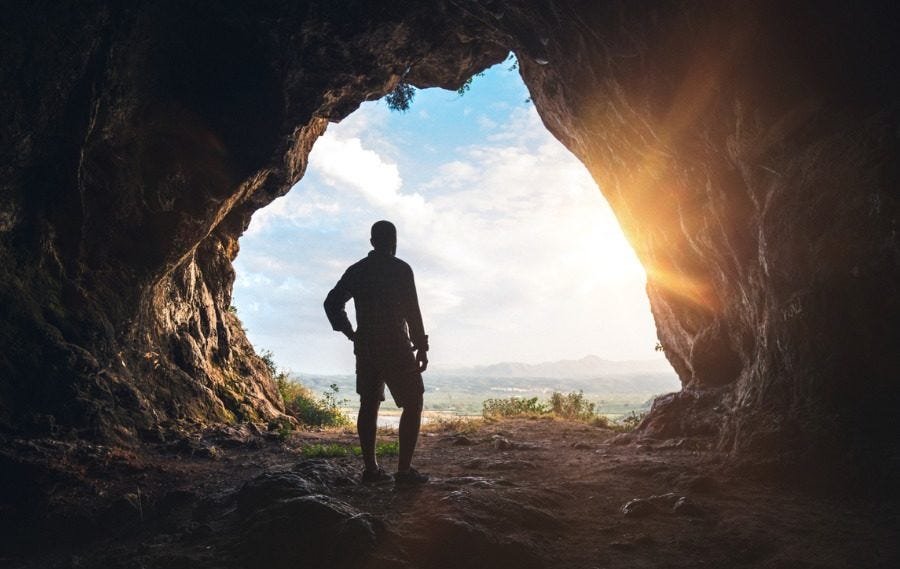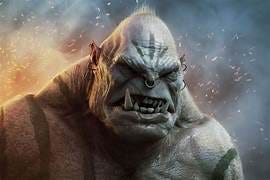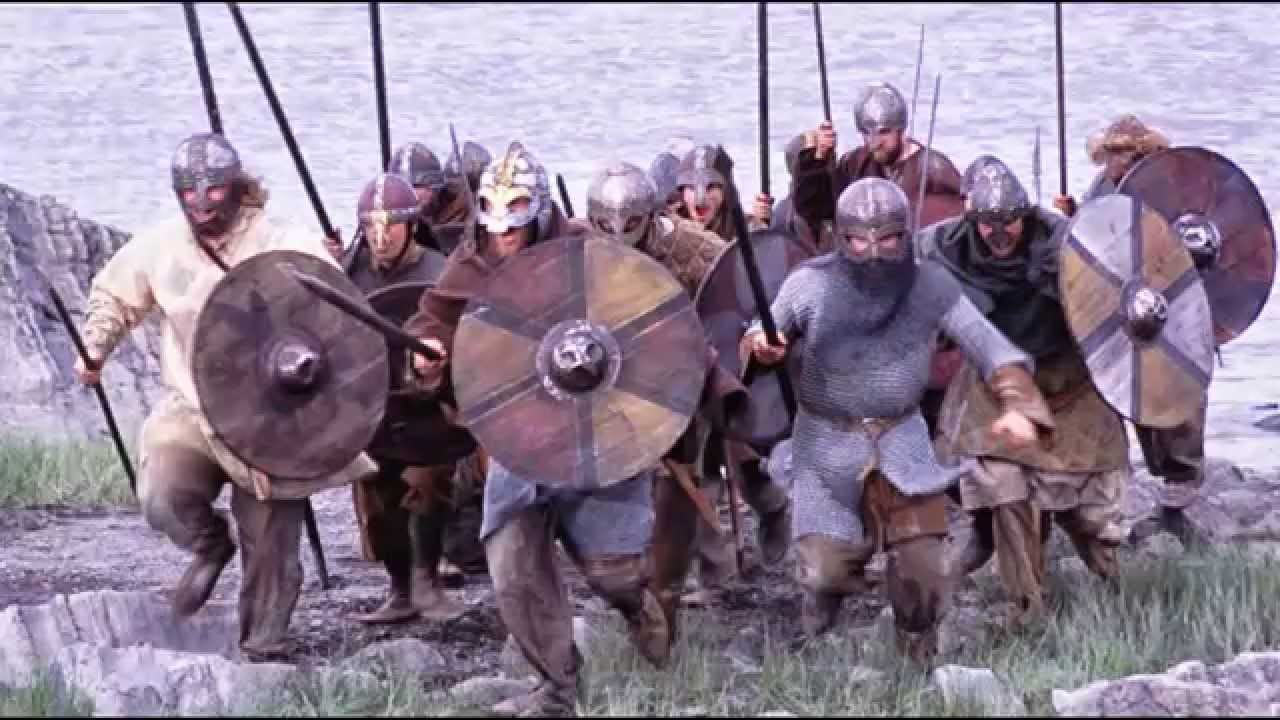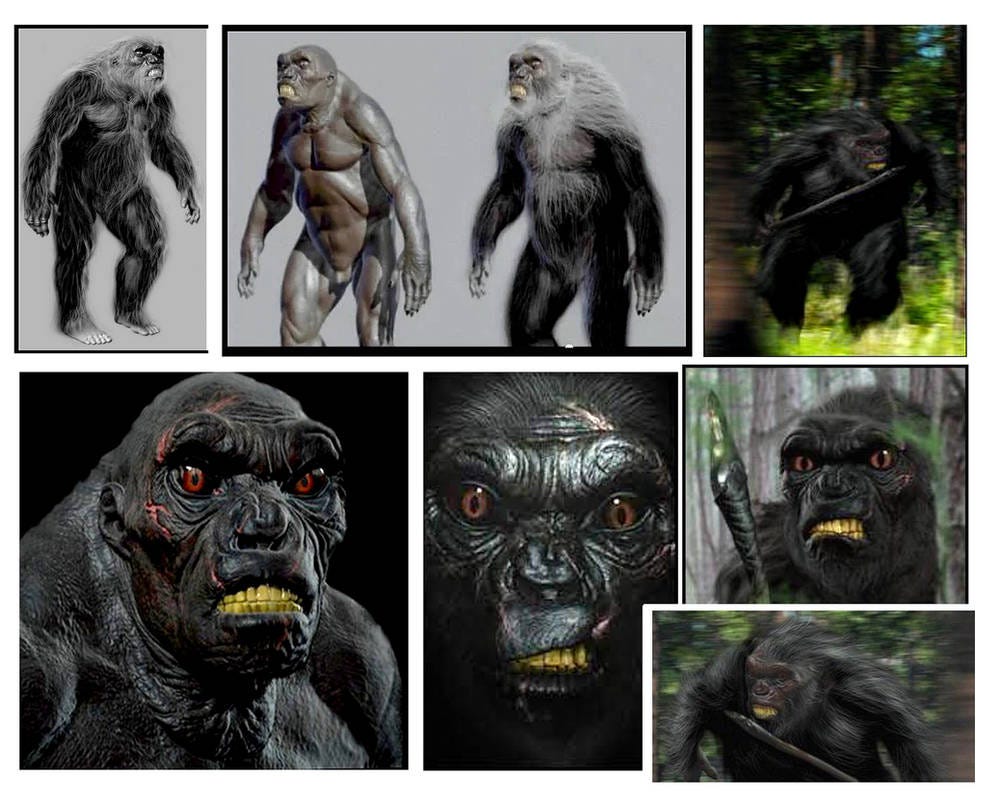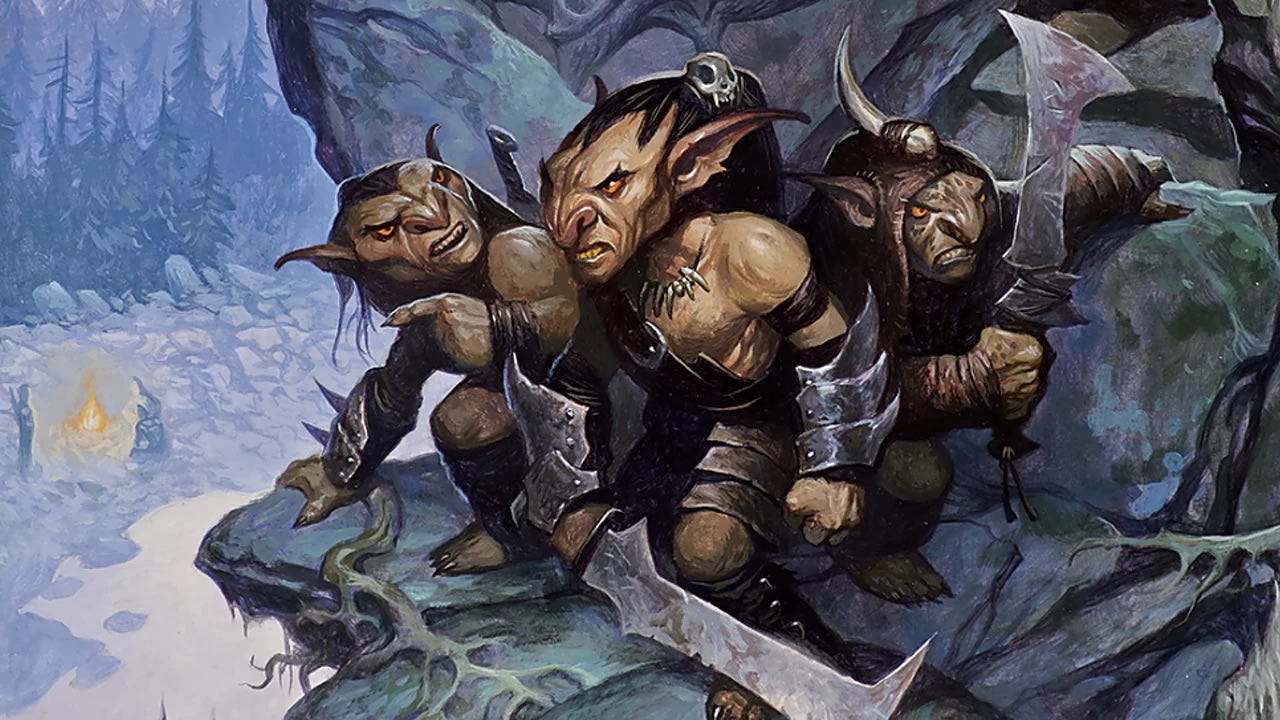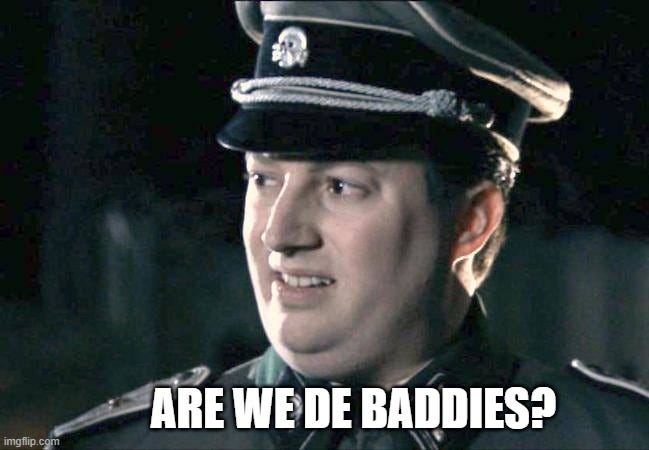Orcs were real—and the modern take is closer than you think!
The story of the modern orc, as seen in such IPs as Warhammer, Warcraft, and Middle Earth is a story that spans 7 million years of human history. It spins a tangled web of psychology, evolution, superstition, linguistics, and apocalypse together to paint a rich, inherently human, tapestry of what came before—of who we are and how we became this way.
The modern orc is usually a brutish, greedy, violent, tribal, and overall aggressive antagonist in most fantasy stories. Modeled off of Tolkien’s Uruk Hai, they are typically portrayed as evil, demonic, or with supernatural elements / origins. These creatures typically form armies out of nowhere and invade the realms of men to carry off treasure, slaves, women, and yes even children at times. The fate of those carried off usually results in becoming dinner or the backstory of a Half-Orc character from DnD.
There are many similarities that can be drawn between the modern idea of orcs/orks, and other major antagonists. Spanning from “the monsters watching from the edge of the firelight” to “the army of darkness approaching”, branching out into real world examples such as Viking Culture, Atilla the Hun, Genghis Khan, warfare in general, natural human predators—and yes, even apocalyptic events. This is the Sword of Damocles that orc-like antagonists almost always hold over the heads of humanity as a whole in stories, the very fate of humans themselves.
To learn the dark origins of this recurring orcish motif throughout humanity’s history and stories, we can easily trace it all the way back to a surprising source right at the root of our evolutionary path.
Tolkien derived the term “orc” in name alone, modeling the physical aspects off of George MacDonald’s work “Princess and the Goblin”. He took the term because of the Old English definition of it, roughly translating to “Demon or Demonic”, which was derived from several similar definitions back to the original Latin word “Orcus”. Orcus was not only a term to describe demonic or supernatural things, but was also a Lord of the Underworld and Punisher of Oathbreakers. And you don’t need to take it from us, you can hear it from Tolkien himself in his own writings:
“Orcs, the word as far as I’m concerned, is actually derived from the Old English definition for Demon, but only because of its phonetic suitability and not its particular origin.”
”Your preference of goblin to orc involves a large question and a matter of taste, and perhaps historical pedantry in my case. Personally, I prefer orcs since mine are not goblins like in MacDonald’s case, even-though they resemble them.”
So in other words, and to put some heated debates to bed, yes, Tolkien specifically derived the idea and word “orc” to be a fallen or evil race of some kind (in this case, demonic goblins). It wasn’t until those who came after took the idea of Tolkien’s Uruk Hai (infused with human DNA to make them hulking, brutish monstrosities), and started tweaking the formula for the orc. This is how IPs like DnD have taken their original idea of a pig-man creature (something similar to a goblin and truer to Tolkien’s original “demonic goblin” orcs) and stretched it to a point where orcs are almost indistinguishable from humans.
The facts are as follows:
the modern idea all stems from Tolkien, who popularized it and intended them to be an evil, corrupted, or fallen type of goblin. Though he doesn’t cite it as a source of inspiration, Tolkien was a renowned Beowulf scholar, and it’s no coincidence that the word “orc” is used in that story in its plural form to describe another tribe of fallen creatures condemned by God, alongside the elves, the ettins, and the giants.
Now, goblins! Everybody has em, everybody loves em!
Recurring stories of goblinoids portray a wide variety of such creatures, and the further back one goes, the more spirit-like they become. By the traditional definition, even things like ghosts or incubi could be labeled as a goblin. They can be as small as a brownie, or as large as a troll. Note that goblins tend to have slouched posture, exaggerated limbs, sharp teeth or claws, and even large glowing eyes. The modern world’s first depiction of an accurate traditional goblin by the ancient “spiritual” definition will be something unique, and probably ridiculed at first for the general public’s lack of knowledge of where this stuff comes from. Regardless, we can stick to the more physical and social side of goblinoid creatures to discover plenty of details on where these ideas originate from.
What if you found out that orcs & goblins are closer to humans than we think, and IPs like DnD might not be totally and disgustingly wrong with what they’re doing?
(Though, the moralization and civilizing of what is supposed to be a brutish and violent race can still be done away with, however.)
The truth is, WE are orcs, and to get the full picture, we need to go WAY back.
The story of us starts millions of years ago, when humanity first branched into its many species (depending on the region). The Denisovans settled in Russia, Floresiensis had Indonesia, Luzonensis had parts of Asia and the Philippines, Neanderthals had Europe, the Brittish Isles, and parts of asia, and finally, Sapiens had Africa and every other inhabitable region (in time). Likely far, far more species of Human existed (each with their own specializations), but the forensic evidence suggests that wherever the orcs went—species of man went extinct.
Often we see Neanderthals depicted like the above image (happy, friendly, man-like, approachable), but recent discoveries suggest they looked FAR from human, having evolved over the course of several ice ages in the region of Europe on a diet consisting 97% of meat. These factors, among others, caused more favorable traits like immense size / bone density, sharp senses, and merciless instincts to form in order to allow them to hunt the creatures of the ice ages (cave bears/lions, tigers, mammoths). In reality, Neanderthals were the apex predator of the planet for hundreds of thousands of years (at least), and looked something closer to this:
Look familiar? It should.
Based on recent discoveries, it’s now accepted that our late cousins, the Neanderthals, resembled something akin to Tolkien’s Uruk Hai or even H.G. Wells’ Morlocks. They had enormous jaws with teeth designed to rip flesh. They had exaggerated limbs and upper bodies in general with slouched postures, which might imply that they were slow, but in reality, they could move FAR faster than any other man (think smart, streamlined, carnivorous gorillas). Their bones were 25 times more dense than ours (homo sapiens), and they had enormous eyes with a cat-like slit. Their eyes even had the same tissue in it that we see in other nocturnal predators which gives it their signature “glow” in the far off darkness. Lack of clothing evidence even implies that Neanderthals were hairy creatures, evoking images of ogres, giants, and trolls (among other goblinoids). Their skin appears to be leathery, and so thick that some arrows and spears would have difficulty piercing it. Some would even go as far as suggesting Neanderthals simply became Bigfoot, but that’s for a different article.
So why does this matter? Orcs are technically “demonic goblins” right? Well, goblins themselves are manifestations of our own fears and the rationalization of the supernatural world. In their physical appearance alone, one can see several key flags that present themselves, such as the large glowing eyes, the nocturnal nature, sharp fangs or teeth, their hunched posture, malicious nature, threat to family or wealth, etc. Even their small, misshapen demeaner can be connected to man’s fear of being weak or vulnerable in general (which makes sense when you start digging into some of the details).
For no less that 500k years, humanity waged a bloody war with Neanderthals. Extreme temperatures pushed them southeast, ensuring confrontation with their cousins in Africa, Russia, and the middle east. Because of their deeply entrenched meat-based diet inherited from previous ice ages, and mankind’s sexual compatibility, other humans were quickly and eagerly added to the menu as they came in contact. Forensic evidence makes this a certainty, based on wounds sustained. It even goes as far to suggest that human bone marrow was one of their favorite meals.
Neanderthals were not stupid bumbling cave men, in fact, they were superior to humans in almost every way for the natural world. They were smarter when it came to weapon crafting, more cunning for war tactics, much faster, much stronger, etc. It’s accepted that a single Neanderthal could easily take down 5-6 homo sapiens at once. They had a spoken language, religion, and their weapon crafting techniques are difficult if not impossible to replicate to this day. They had large family groups organized into tribes, which organized into villages (and so on). They had art, music, understood fire, and crafted tools. Wherever man went, Neanderthals followed, and species of man went extinct. They could detect us from up to 2 miles away with their heightened sense of taste and smell.
Homo Sapiens today share all of our DNA with only a .1% variation between us, this suggests genetic “bottlenecks” that took place in the past and could mean that there were only up to 50 of us at one point in time. For context, chimpanzees (our closest relatives) have as much as a 1.2% variation in DNA between each other. To this day, non-African descent humans carry as much as 2% Neanderthal DNA, and even African descent still carry some (just not as much). One can deduce that this was most likely not placed here consensually. Red hair is also hotly debated to be an original Neanderthal trait. To put it bluntly, we were most likely almost hunted to extinction like our many other cousins before us.
In the end, much like the wooly mammoth and all the other specialized ice-age creatures, it was their intense biological focus in tandem with a series of cataclysms that did them in. Over countless years, it was Homo Sapien’s willingness to retreat as well as our diverse diet which allowed us to survive these same catastrophes. Eventually, Neanderthals found the middle east and humanity retreated into a cave lifestyle for 30k years (recurring events like this could explain our lack of hair). One notable event during this time (aside from what can almost be guaranteed to be MANY events over the course of 7 million years), was the Campanian Ignimbrite Eruption. The loss of life for this event cannot be understated and is most likely responsible for Neanderthals not conquering the entire world. The repercussions to the CIE caused several species to go extinct, and since Neanderthals had a primarily meat-based diet, their numbers fell off a cliff.
By the time man emerged from their caves, the situation had completely shifted. As much as we would like to think that we conquered the orcs in a blaze of glory, or peacefully merged our species over time, the reality is much meeker and much darker. After a millennia of being inflicted with generational trauma (to the point that it became intrenched into our biology) humanity was handed a pass by the powers that be and allowed to populate the corners of the earth unchecked. We were overlooked by cataclysm while on the brink of extinction, and the monsters that hunted us were gone. So, why does this all matter?
Well, post-apocalypse, when man became the apex predator, the biological memory remained. The time when we were prey. This species-wide trauma manifests within our mythology, superstitions, and even our psychology. Theres a reason man has latent fears of spiders, snakes, heights, and darkness (among other phobias). Over millions of years, it becomes ingrained within us that yes, this creature is poisonous, or that yes, that situation is dangerous. All the characteristics of the modern orc are these types of manifestations from a time when we were prey, but also when we preyed upon each other (like organized warfare. Not all of this trauma can be fully attributed to Neanderthals, as some inevitably comes from other fears such as the neighboring tribe/nation of Homo Sapiens invading (see huns, mongols, vikings, scithians, bronze age sea peoples, greeks, romans, etc).
Over time, man poured their fears into superstition and myth (most of the time unknowingly). A million-year struggle becomes a distinct fear of invasion by monsters, then becomes the fallen races from Beowulf and the idea of goblin hordes over time, which inevitably becomes Tolkiens goblinoid orcs and monsterous Uruk Hai, and finally gets adapted into modern culture as the hulking Warcraft and Warhammer orks. This evolution is actually a great example of how everything has come full circle. The entrenched biological memories from our time as prey have finally returned to join with our modern idea of tribal/invasive monster mythology. Meaning, the bigger and more “Neanderthal-like” modern orcs become, the more it aligns with our real-life ancient fears written into our blood. This is why the brutish modern orcs from 40k and Warcraft are naturally accepted as an augmentation, and the human-like modern DnD orcs are rejected. It’s a million-year-old story tattooed onto us.
For a unique spin on orcs, goblins, and other fantasy creatures realistically rooted in their real-life origins, look no further than the world of Arkae, authored by A.C. Pritchard. Arkae is a fantasy world stuck in a perpetual ice age. Orcs of Arkae live in the icy regions and follow the frost across the globe as the ocean freezes in front of them and defrosts behind. Hairy, hulking, and tribal, they conquer and consume everything in their path as the cyclical ice age continues on indefinitely. The nature and biology of Arkae orcs were written before A.C. Pritchard came across the new information about Neanderthals. Inspired by Tolkien, Warcraft, and Warhammer, and real history, his original intent was to put them in the most realistic context possible. Turns out it was more realistic than anticipated—it seems to have actually happened.
In conclusion, orcs are timeless. Tolkien is the father of the modern orc, which is really just a demonic or evil variation of goblinoid (even though he labels them as corrupt men and elves IN book, he modeled them after traditional MacDonald goblins). As far as goblins go, we’ve all seen the brutish nature and appearance of the many types that exist (trolls, ogres, gremlins, etc). All of these combined traits coincide with inherent fears humanity has picked up over the course of our time on this planet. We aren’t saying orcs were real, but something like an orc definitely existed at one point, and we definitely struggled with and against them for a long, long time. There was probably even a dark lord or three. These dormant memories mix with modern ones, such as the horrors of war in general, and give us the mainstay fantasy antagonists we all know and love. The only difference is that Neanderthals now only exist in our blood, which begs the question…
Dive into Arkae RIGHT HERE! and check out the graphic novel campaign RIGHT HERE!
Discussion about this post
No posts



